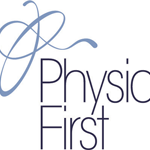If an injury or illness has impaired your ability to walk normally, you may need gait training to improve your motion. Potential causes of problems with gait and balance include:
• Aging: With a natural decrease in strength and flexibility comes impairment to your balance.
• Musculoskeletal Problems: If your range of motion, strength, endurance and mobility are impeded for any reason, your gait may be affected, since you need a certain level of balance and strength to walk properly.
• Impaired Cognition: You are less able to adapt to a situation if your judgment or safety awareness decreases, your attention is poor or you process information more slowly than before.
• Impaired Neuromuscular Responses: Disruption in the signals between the brain and the muscles can affect gait and balance. The disruption can result from a variety of issues, such as a stroke, Parkinson’s disease or multiple sclerosis.
• Impaired Sensory Processes: If your body’s sensors are unable to collect information about the environment, it can lead to balance and gait issues. Sensory disabilities may be caused by glaucoma, cataracts or diabetic retinopathy, to name just a few possibilities.

Gait Analysis
Your physiotherapist may diagnose your gait as being abnormal after reviewing your medical history, discussing your symptoms and doing a walking gait analysis. She or he may use a gait scan device to assess the biomechanical function of your feet.
Gait and balance training is a type of physiotherapy that helps you learn to walk normally again. The benefits of gait and balance training include:
• Improving your balance and posture
• Strengthening your joints and muscles;
• Developing muscle memory;
• Increasing your endurance;
• Retraining your legs to participate in repetitive motion; and
• Increasing your mobility while decreasing the risk of falling.




